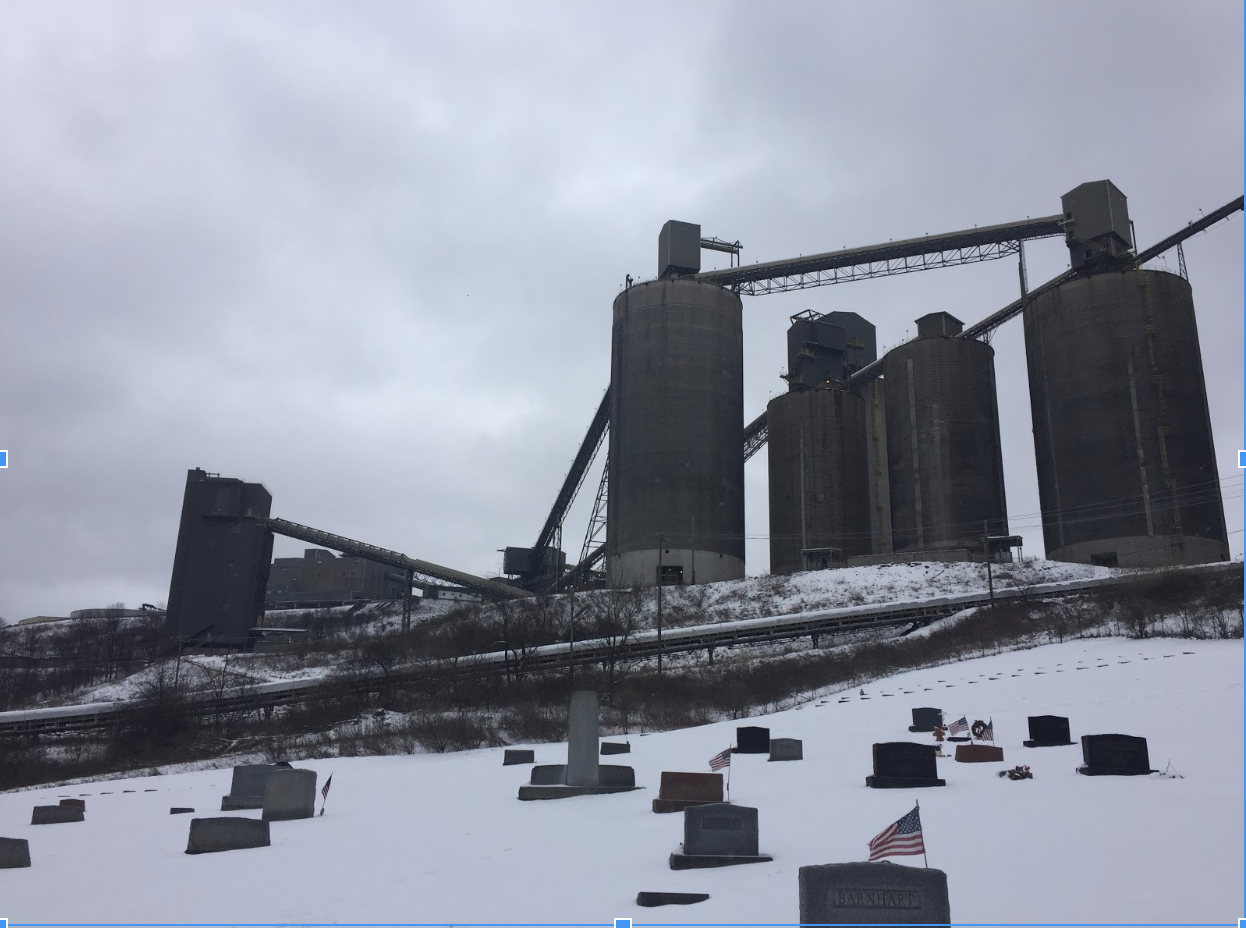
Mimi Wahid is an intern from MIT working with The Center for the month of January. Last week, she went on CCJ’s “Fracking and the Coalfields” tour with Executive Director Veronica Coptis. Below are her reflections on the experience.
Coalfields Tour Reflection: What does it mean to be undermined?
As an intern at the Center for Coalfield Justice, I’ve heard a lot about undermining these past few weeks. I’ve been told about what happens when creeks and streams are undermined: sometimes the creekbed fractures, the water drains, the groundwater systems are affected. Something geologically permanent can disappear overnight. I’ve seen images and videos about what happens when a building is undermined: the foundation cracks, walls can shift, properties are abandoned. Something formerly sturdy can become unsafe. I’ve started to understand what the economic and environmental impacts of undermining—meaning, mining underneath structures and water sources—are. But on the tour of the coalfields I took last week, I saw what it looks like when an entire community is undermined: when a community’s power is weakened, when their strength is removed from underneath them like a seam of profit-producing coal, when respect, trust, and security are piped away like wet natural gas.
I rode in the front seat of Veronica’s car and listened as she told stories of the region. As we drove through Greene County, Veronica pointed to her right at a valley she used to play in with her siblings. She told us about how, in what felt like an overnight transformation, her favorite place to recreate on turned into a coal refuse disposal area. Sudden and dramatic transformations of land were present all throughout the tour. New roads cut through previously forested hillsides to accommodate heavy truck traffic. Valleys transformed into toxic hills as they were filled in with coal refuse. Our tour began at the Bailey Mine Complex coal preparation plant, where our attention was directed to the massive silos that store coal. Across the horizon, Veronica gestured towards two fracking well pads that, apparently, didn’t exist a few years ago. She explained that, before the wells were built, she used to point out this view as an example of the beautiful, undisturbed forests that CCJ fights to protect. In just a few years, the tour stop transformed from a message of hope to an example of the presence and power of the extraction industry.
While on the tour, I tried to imagine what it would feel like to watch the landscape around me transform; to see strips of trees clearcut to make way for pipelines, valleys filled with toxic refuse, and skies cluttered with towering cranes. I wondered how this might affect my sense of security in my home and on my land. I imagined that it would be difficult to feel powerful if I couldn’t predict or influence the changes in the air I breathe, the earth beneath my home, the water sources I drink from. On the tour, Veronica told us about the various resources, like coal and natural gas, that are extracted from Washington and Greene counties. But the tour also made me wonder about the intangible things that have been extracted: it seemed as though residents’ rights to clean water, sense of security on their land, and confidence in the region’s economic future had been removed as well. It made me wonder if there even exists a fair compensation for extraction of this scale and kind.
Going on CCJ’s “Fracking and the Coalfields” tour made me think more critically about what it means to be undermined. The tour showed me the effects of longwall mine activity through visible changes, like the empty bed of Duke Lake and the boarded up farmhouses that lined our drive. But it also showed me examples of undermining in another sense: places where the extraction industry has subverted, weakened, and removed power from residents. It reminded me of the importance of building and retaining power in communities affected by extraction. And it gave me deep respect for those with the strength to envision a different, more just, future for the coalfields.
